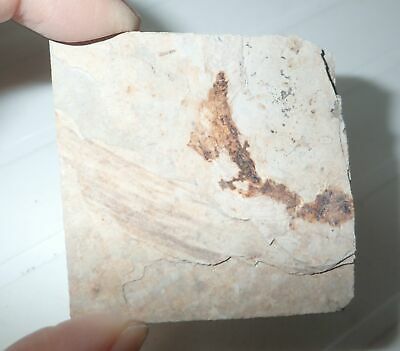-40%
Detailed Ginkgo Cranei Fossil Plant Leaf Morton County, ND Paleocene Age Stand
$ 89.75
- Description
- Size Guide
Description
Detailed Ginkgo Cranei Fossil Plant Leaf Morton County, ND Paleocene Age StandDetailed Ginkgo Cranei Fossil Plant Leaf Morton County, ND Paleocene Age Stand
Location: Morton County, North Dakota, Sentinel Butte Formation
Weight: 8.4 Ounces
Dimensions: 4.1 Inches Long, 3.6 Inches Wide, 0.7 Inches Thick (
Plate
)
Leaf Dimensions: 2.3 Inches Long, 1.6 Inches Wide
Come with free stand.
Item pictured is the one you will receive.
This is a genuine fossil, not a replica.
Paleocene Age 60 million years ago
Ginkgo
Fossil Plant Leaf.
At the onset of the Paleocene Epoch, Earth was recovering from the end-Cretaceous asteroid impact. The climate was subtropical almost to the polar circles, ocean temperatures were high, and polar ice caps were absent. The Paleocene Epoch brackets two major events in Earth’s history. It started with the mass extinction event at the end of the Cretaceous, known as the Cretaceous–Paleogene boundary. This was a time marked by the demise of non-avian dinosaurs, giant marine reptiles, and much other fauna and flora. The die-off of the dinosaurs left unfilled ecological niches worldwide. It ended with the Paleocene–Eocene Thermal Maximum. This was a geologically brief interval characterized by extreme changes in climate and carbon cycling. Terrestrial Paleocene strata immediately overlying the boundary is in places marked by a “fern spike”: a bed especially rich in fern fossils. Ferns are often the first species to colonize areas damaged by forest fires; thus the fern spike may indicate post-Chicxulub crater devastation. In general, the Paleocene is marked by the development of modern plant species. Cacti and palm trees appeared. Paleocene and later plant fossils are generally attributed to modern genera or to closely related taxa. The warm temperatures worldwide gave rise to thick tropical, sub-tropical and deciduous forest cover around the globe (the first recognizably modern rain forests) with ice-free polar regions covered with coniferous and deciduous trees. With no large grazing dinosaurs to thin them, Paleocene forests were probably denser than those of the Cretaceous. Flowering plants (angiosperms), first seen in the Cretaceous, continued to develop and proliferate, and along with them coevolved the insects that fed on these plants and pollinated them.
Shipping
Payments
Terms of Sale
Contact Us
We offer combined discounted shipping on purchases made the same day.
If your using PayPal payment we only ship to the shipping address specified on PayPal.
Most orders are shipped with the United States Postal Services with tracking.
All shipments will be shipped within 24 hours except Sundays
Signatures are required on all purchases over 0 USD
All payments must be made within 72 hours of placing your order.
UNCONDITIONAL RETURN POLICY
At Fossil Age Minerals, customer service and satisfaction are our highest priorities. Because your positive buying experience is very important to us, Fossil Age Minerals has an Unconditional return policy if:
1. All returns must be in their original state.
2. All return requests are made within 30 Calendar days of receipt of merchandise.
You can contact us between the hour of 9:00AM - 8:00PM Central time Mon - Fri. We are closed on weekends and holidays.













